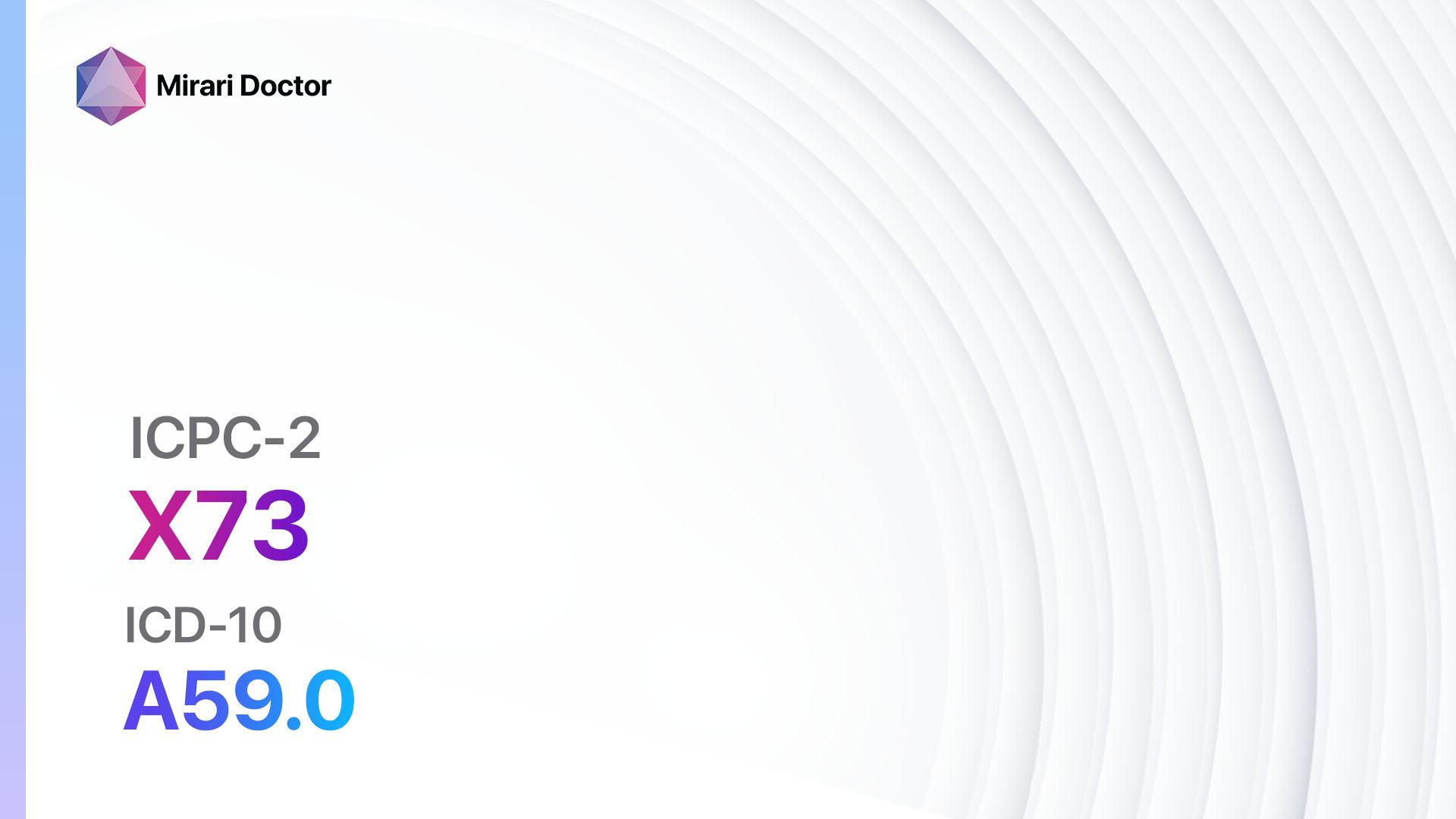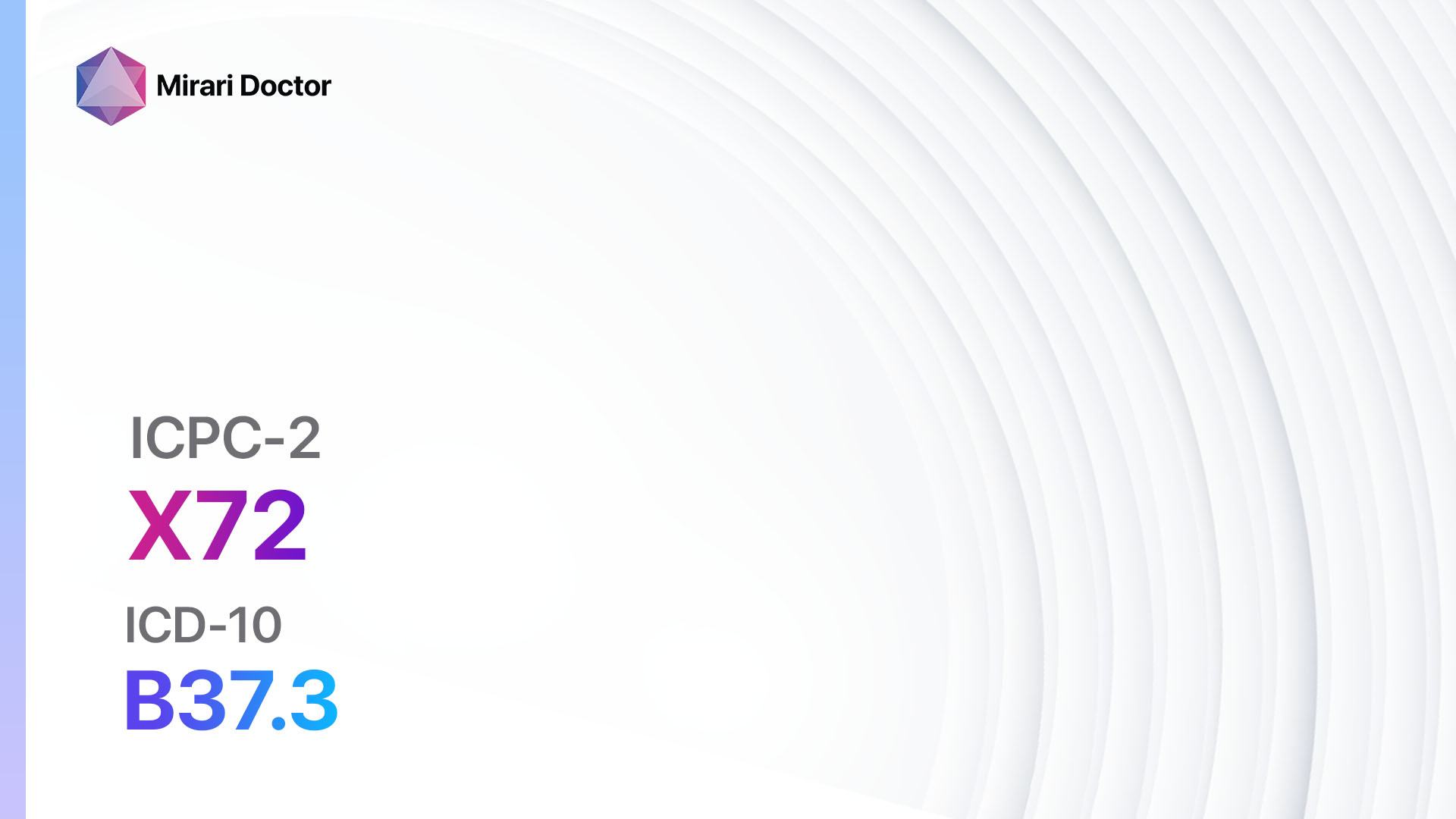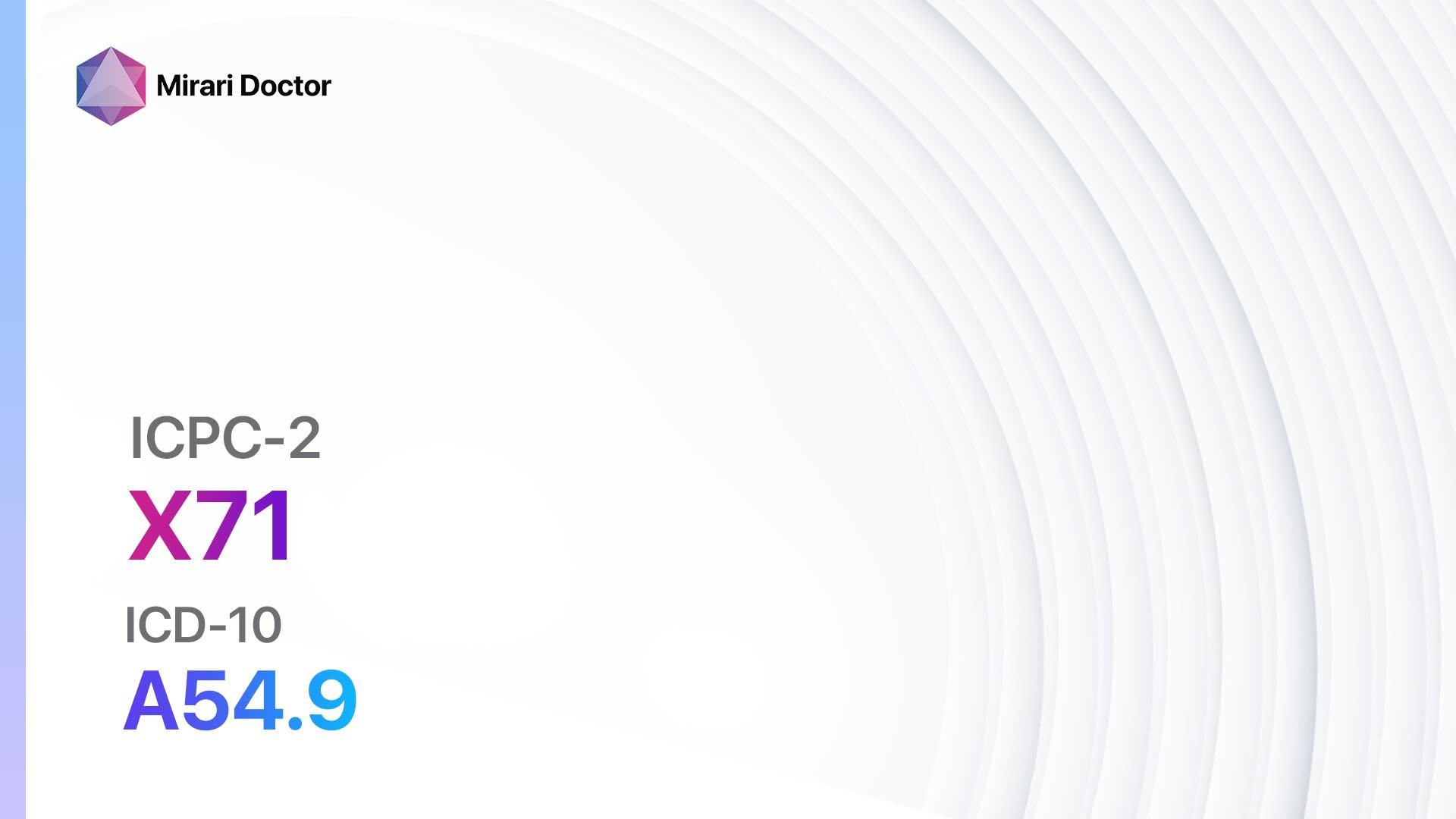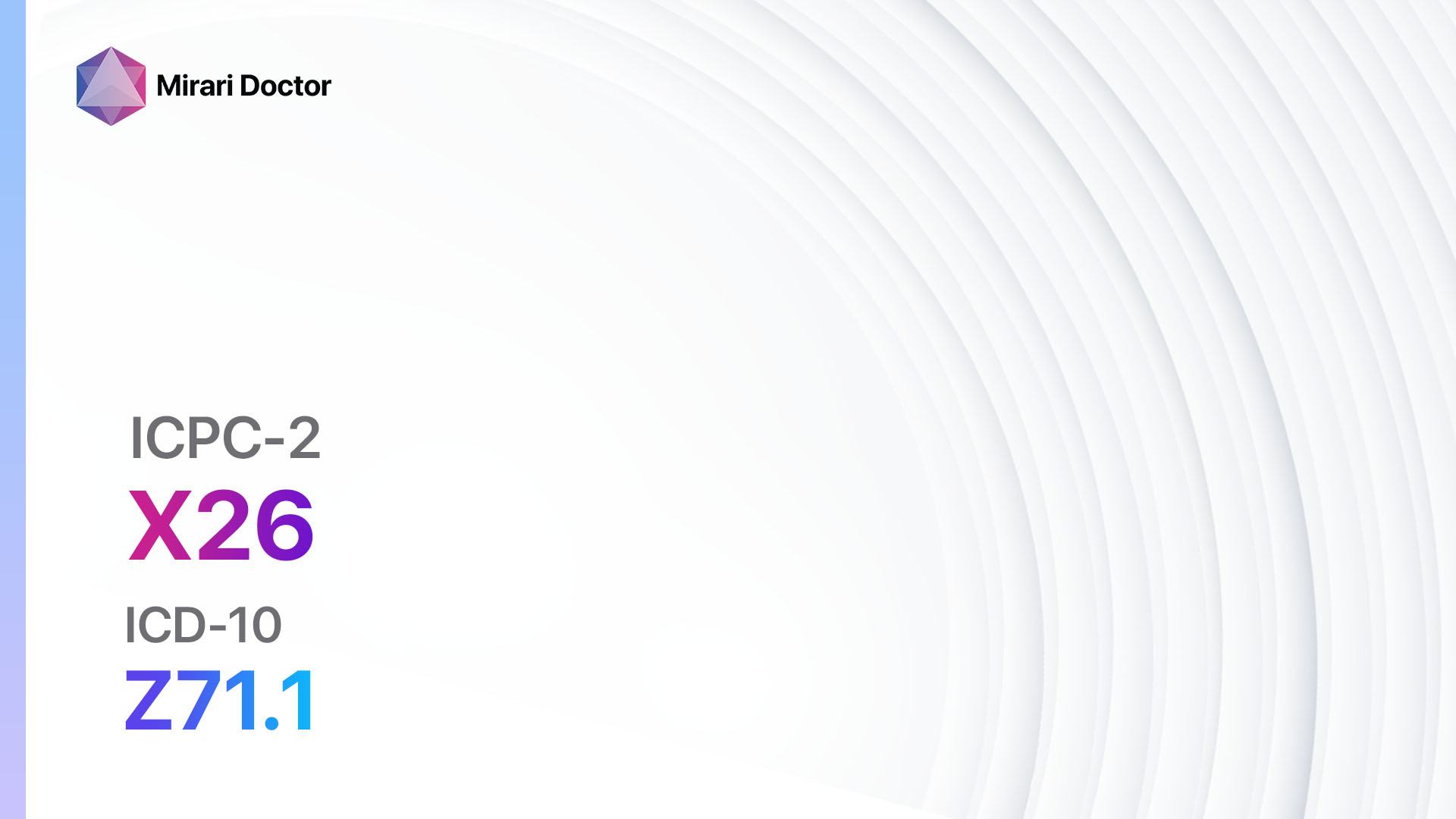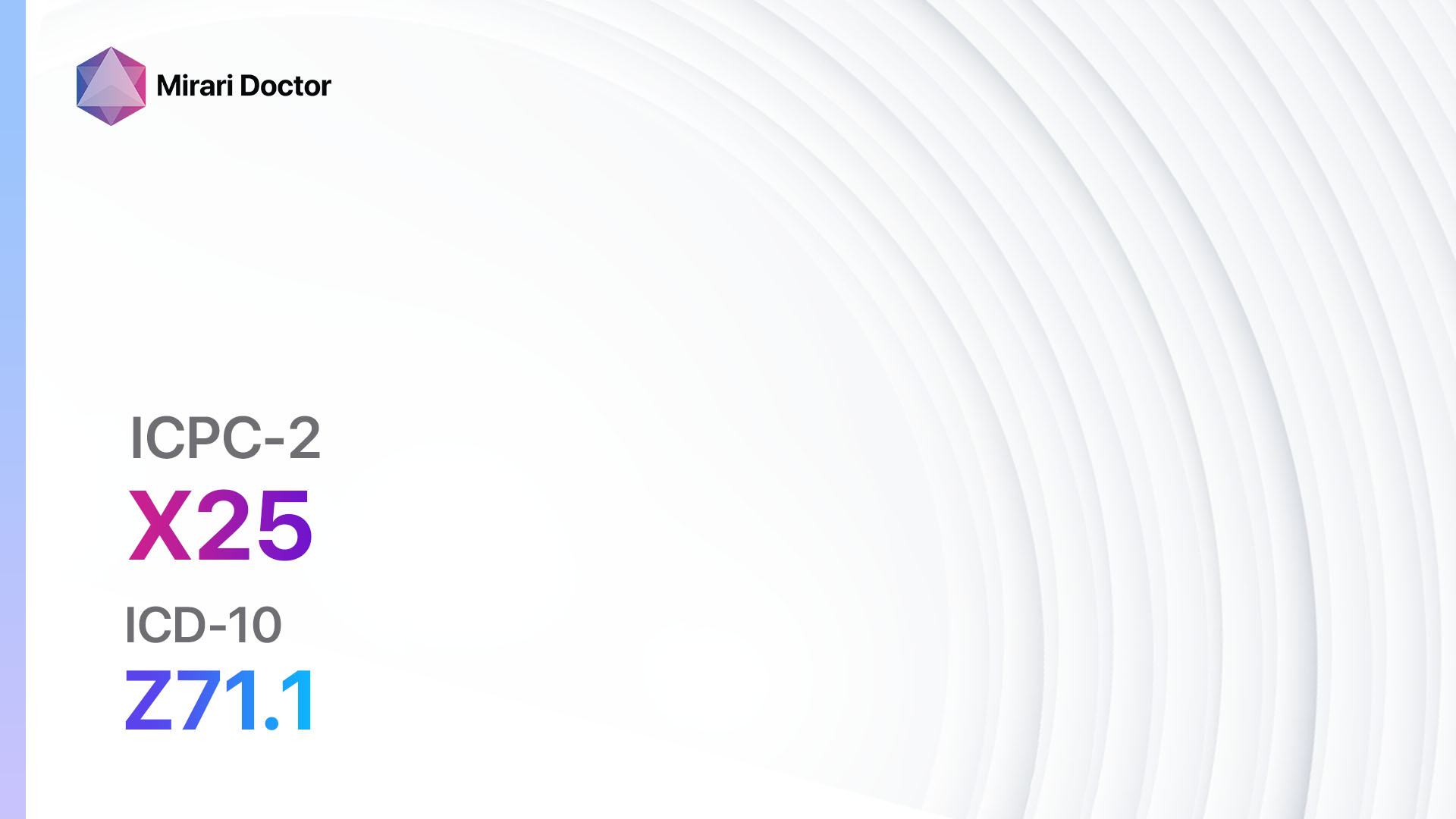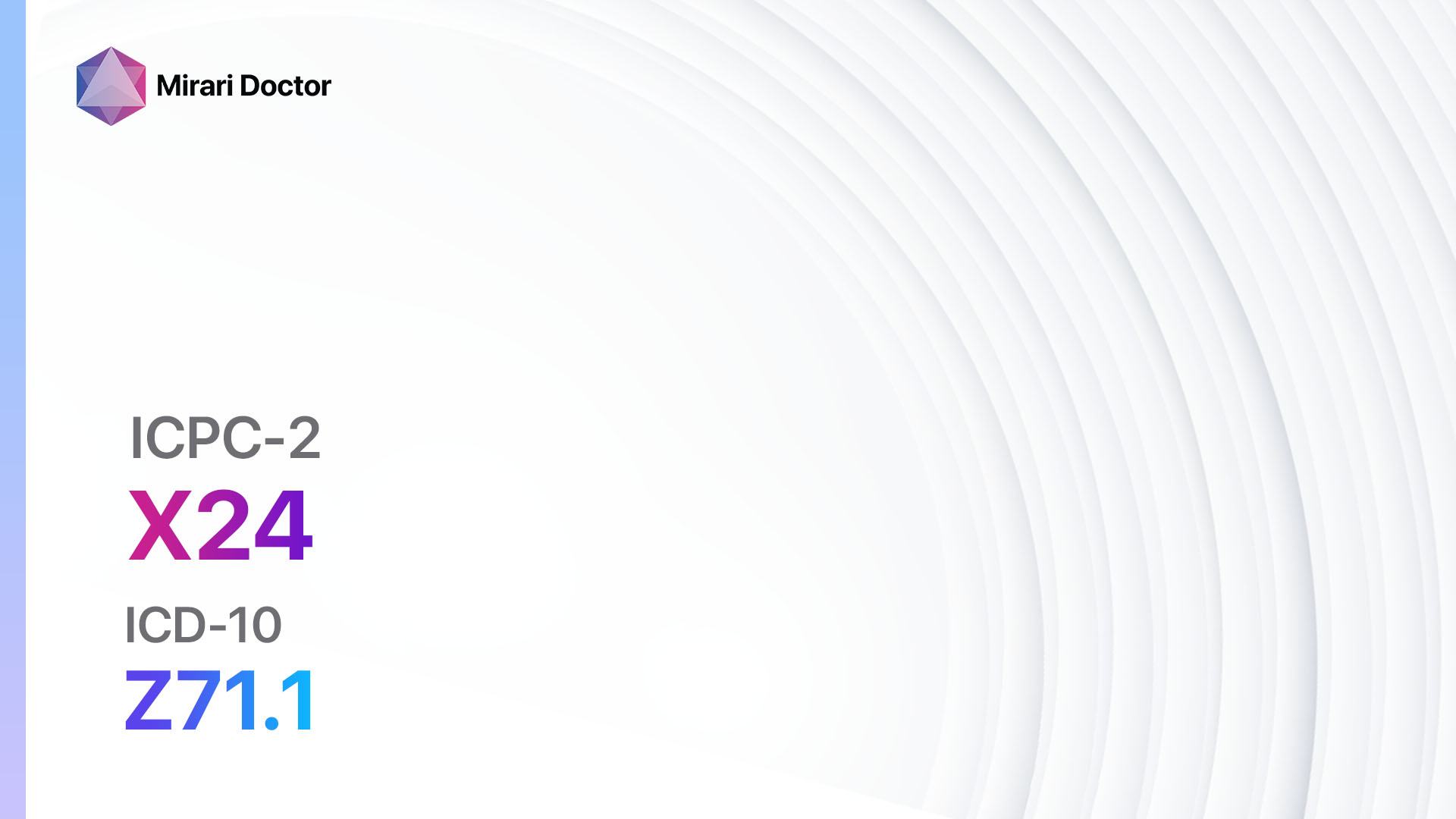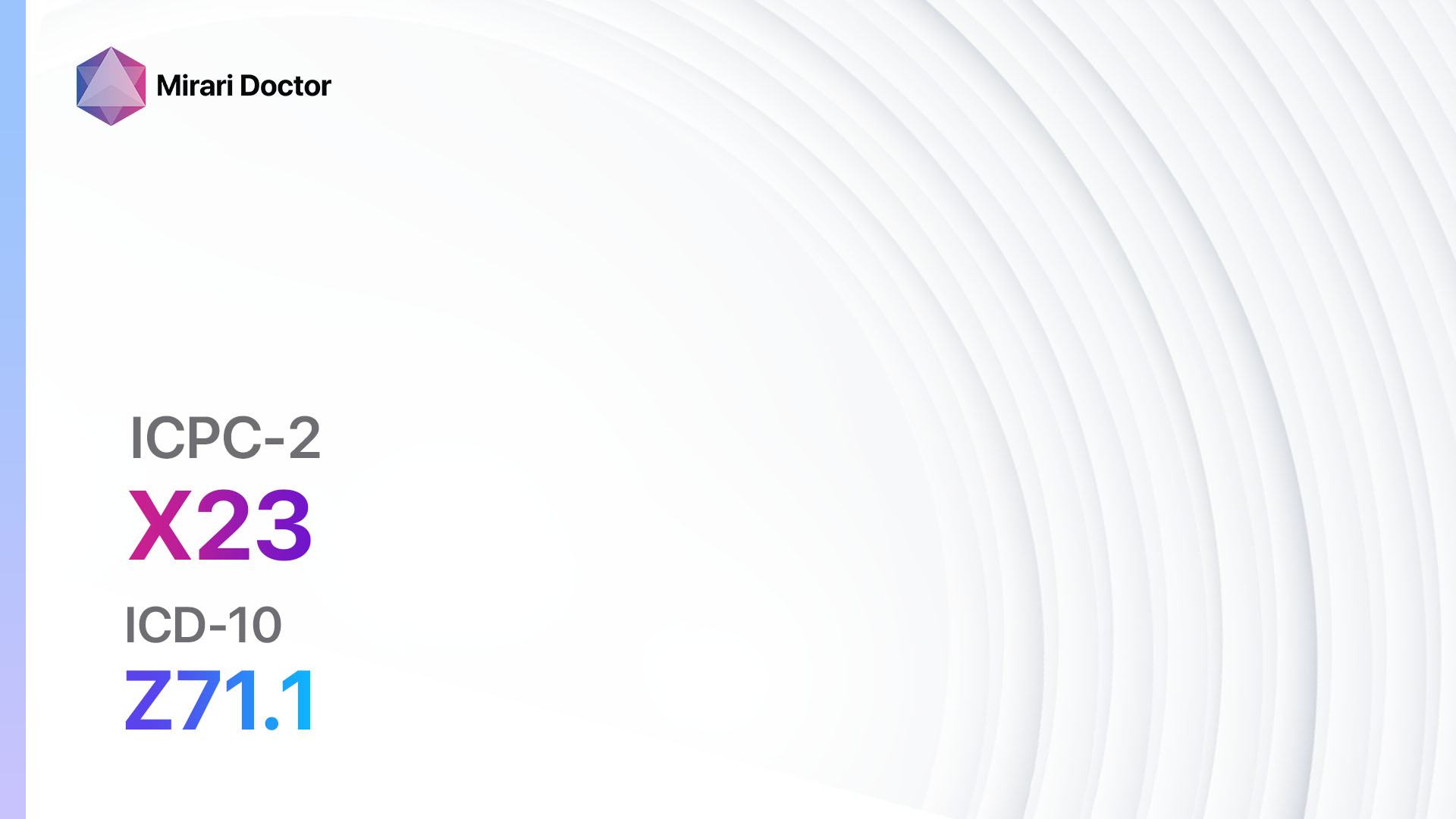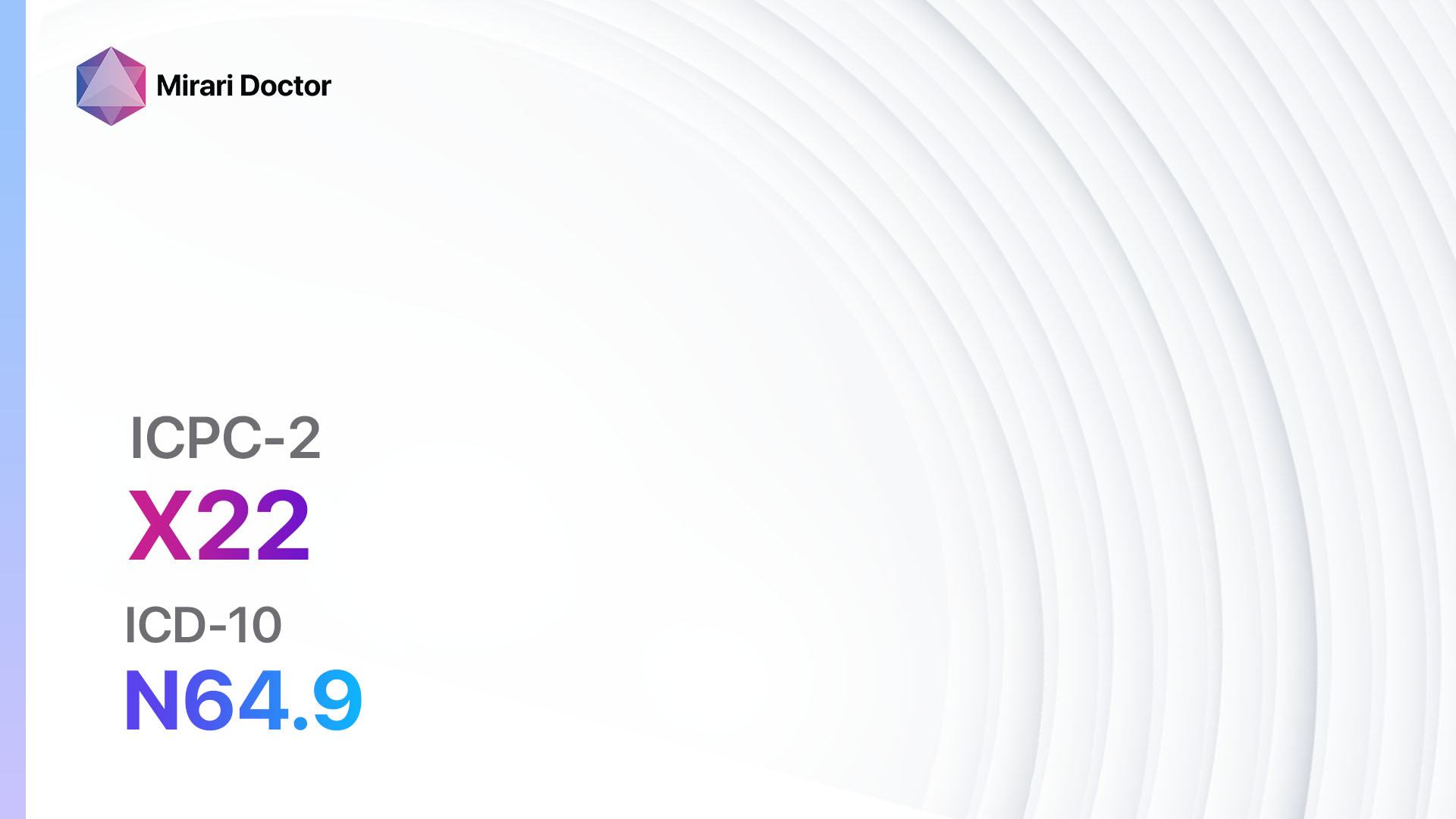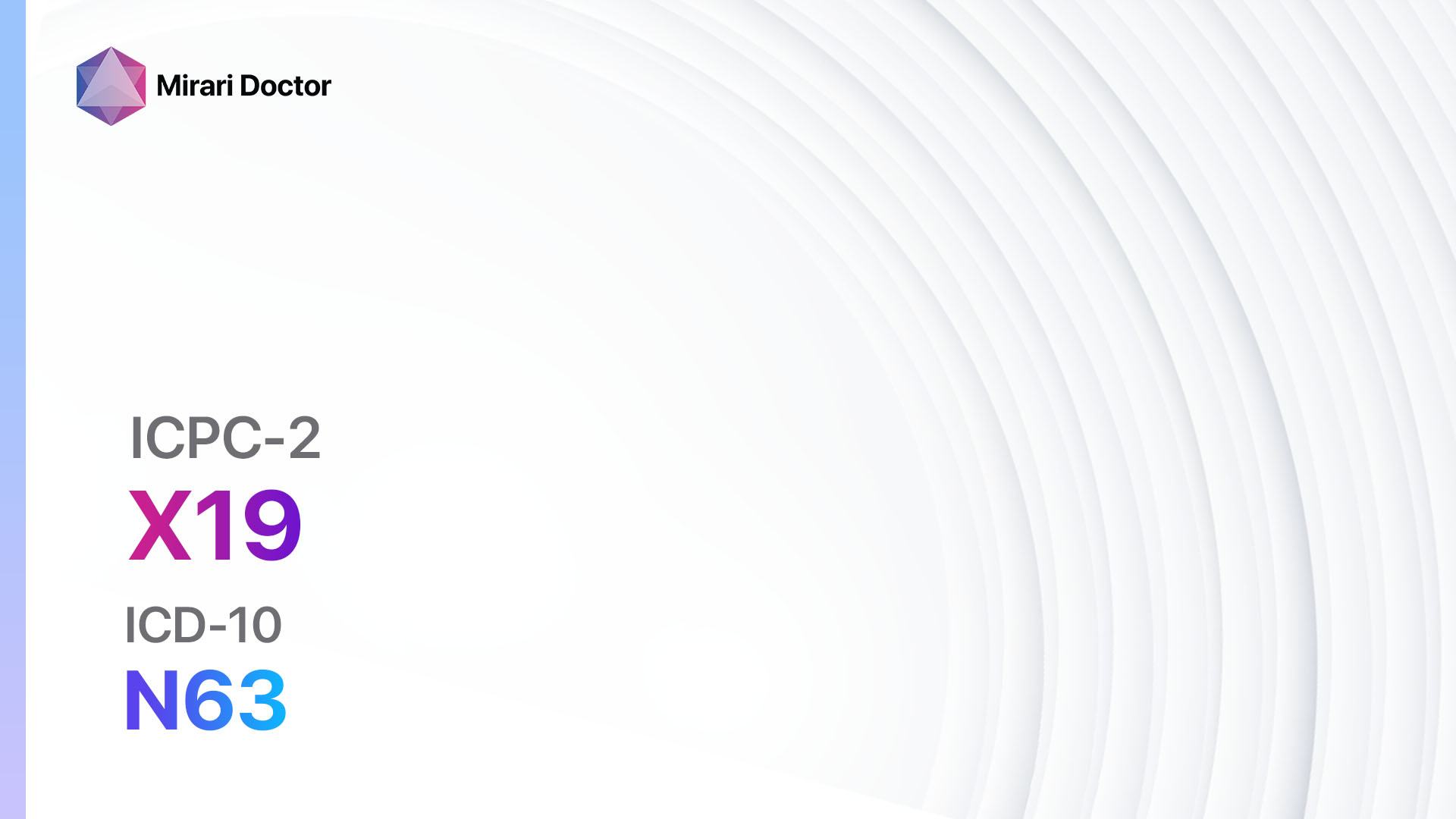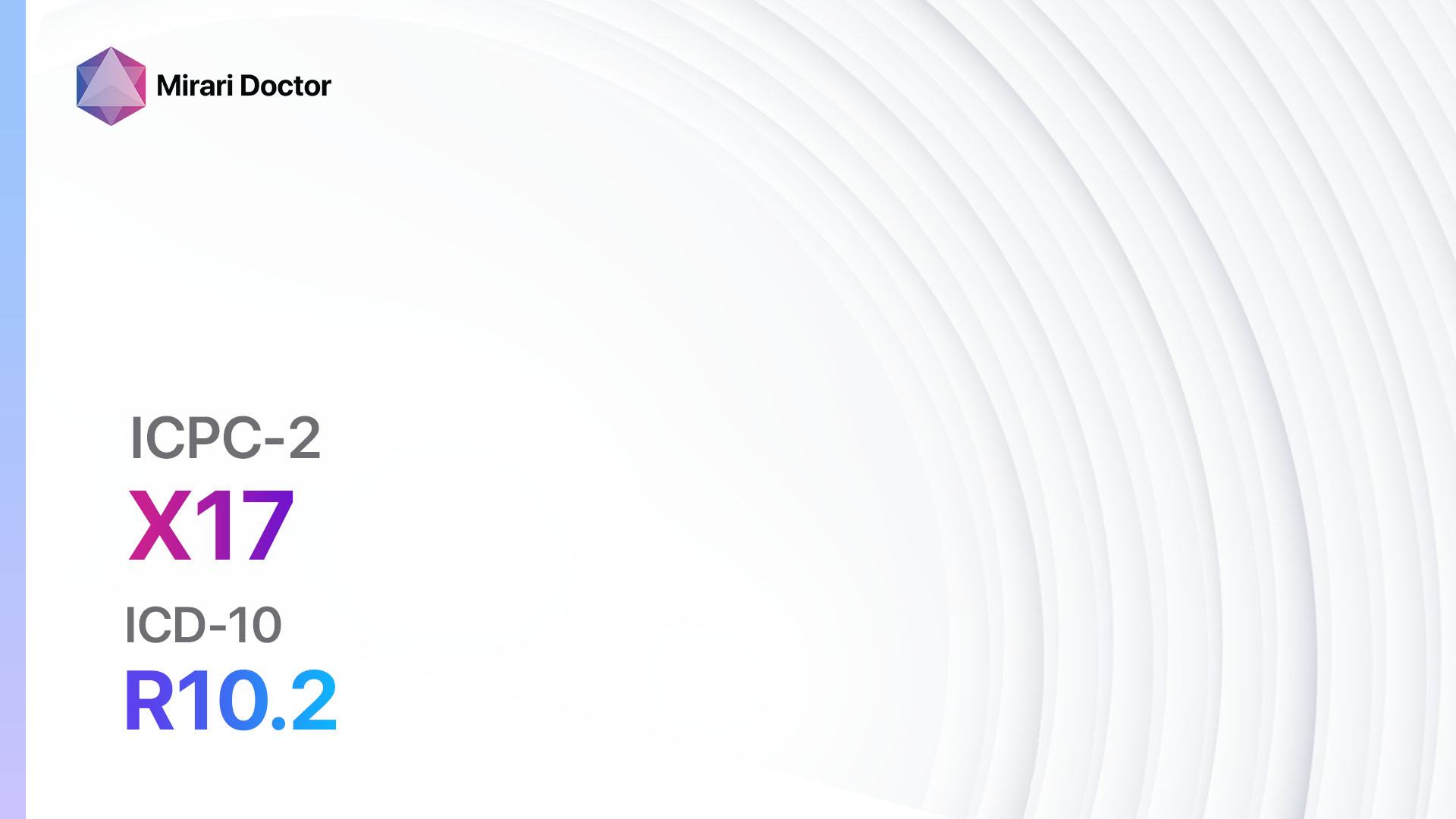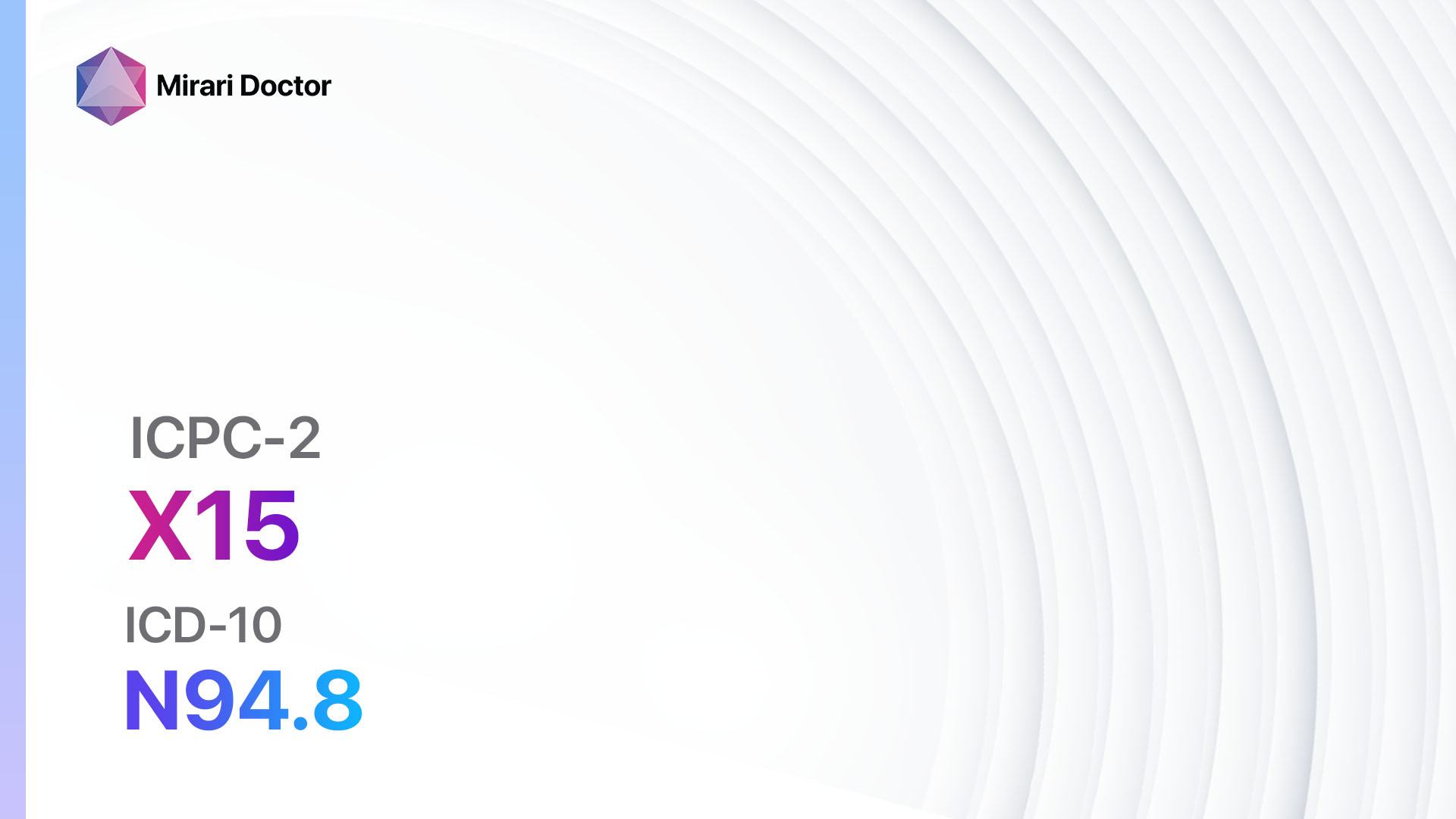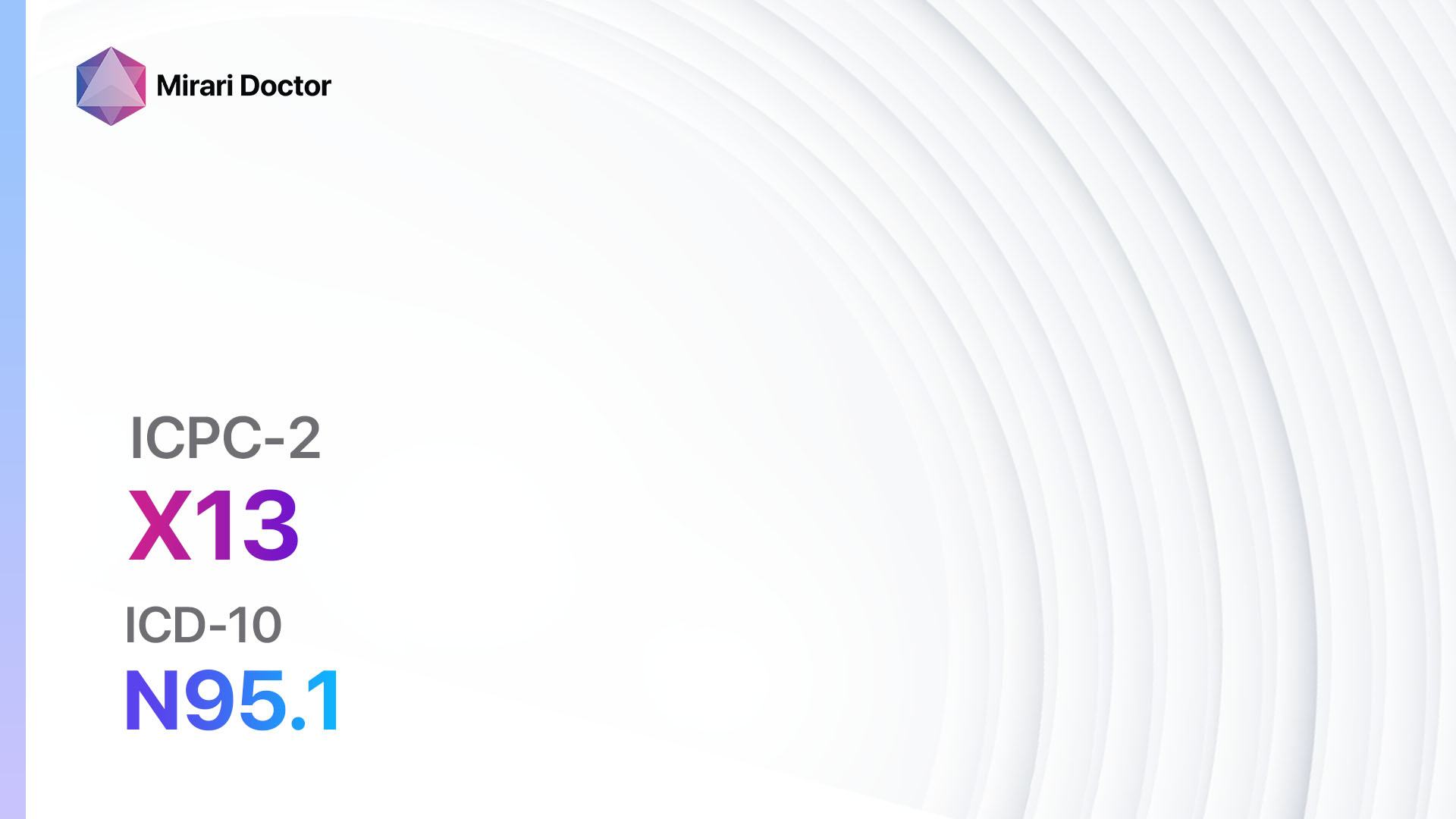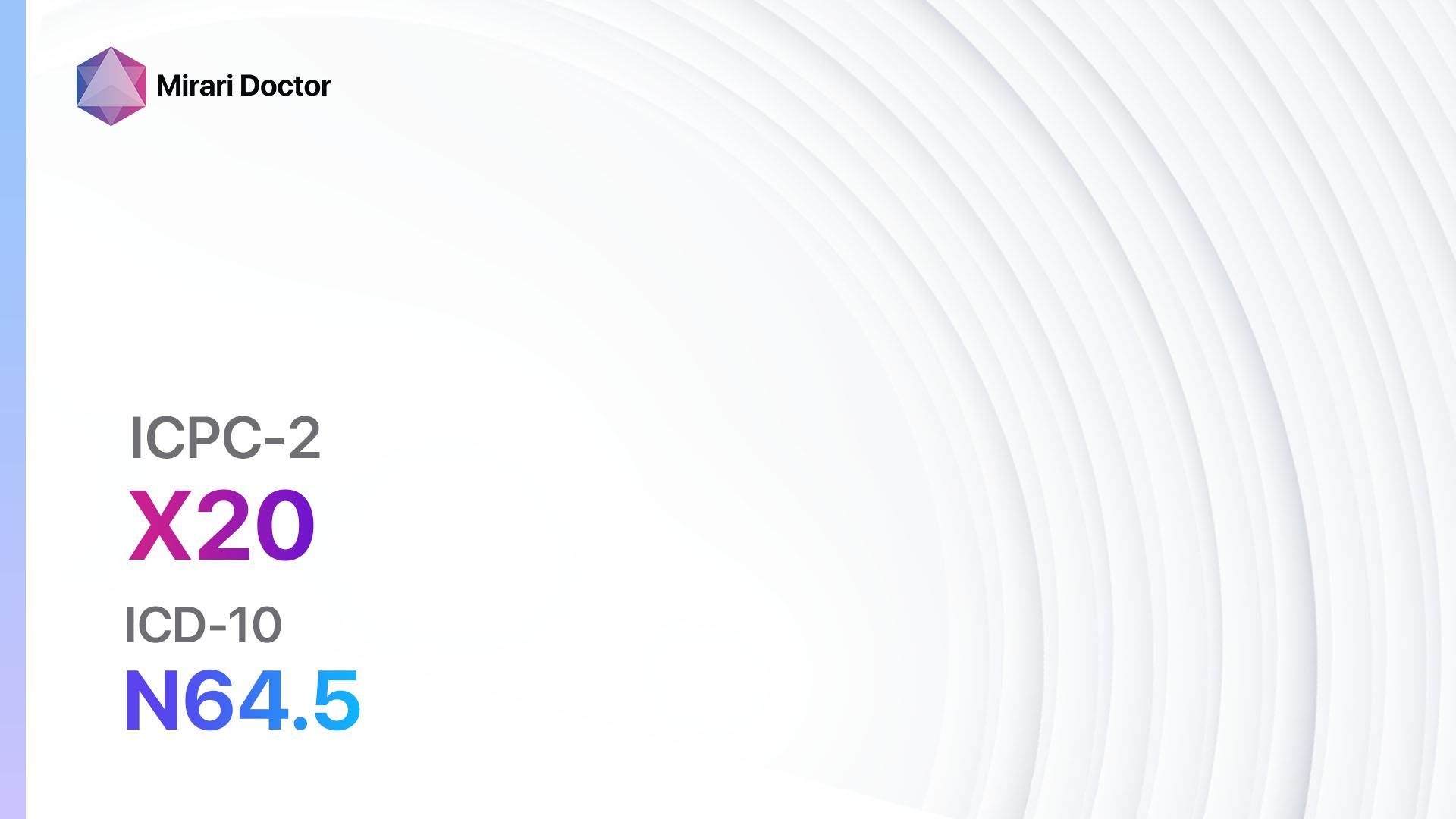
Introduction
Nipple symptoms or complaints in females can be indicative of various underlying conditions, ranging from benign causes to potentially serious diseases. It is essential to evaluate these symptoms thoroughly to determine the appropriate diagnosis and management[1]. This guide aims to provide a comprehensive approach to the evaluation and management of nipple symptoms in females.
Codes
- ICPC-2 Code: X20 Nipple symptom/complaint female
- ICD-10 Code: N64.5 Other signs and symptoms in breast
Symptoms
- Nipple discharge: Abnormal fluid secretion from the nipple.
- Nipple pain: Discomfort or tenderness in the nipple.
- Nipple changes: Alterations in nipple appearance, such as inversion, redness, or scaling[2].
Causes
- Hormonal changes: Fluctuations in hormone levels during menstrual cycles, pregnancy, or menopause can cause nipple symptoms.
- Infections: Bacterial or fungal infections can lead to nipple discharge or pain.
- Breastfeeding-related issues: Nipple symptoms can occur due to improper latch, engorgement, or mastitis.
- Trauma: Injury or trauma to the breast or nipple area can cause nipple pain or changes.
- Breast conditions: Nipple symptoms can be associated with benign breast conditions like fibrocystic changes or breast cysts.
- Breast cancer: In some cases, nipple symptoms may be a sign of breast cancer, such as Paget’s disease[3][4].
Diagnostic Steps
Medical History
- Gather information about the patient’s age, menstrual history, pregnancy, and breastfeeding history.
- Inquire about the duration, frequency, and characteristics of nipple symptoms.
- Assess for any associated symptoms, such as breast lumps, skin changes, or systemic symptoms.
- Identify any risk factors for breast cancer, such as a family history of the disease or previous breast biopsies[5].
Physical Examination
- Perform a thorough breast examination, including inspection and palpation of both breasts and the nipple-areolar complex.
- Assess for any abnormalities in nipple appearance, such as inversion, discharge, or skin changes.
- Palpate for breast lumps or masses and evaluate lymph nodes in the axilla[6].
Laboratory Tests
- Hormone levels: In cases where hormonal imbalances are suspected, hormone testing, including prolactin and thyroid function tests, may be necessary.
- Microbiological cultures: If infection is suspected, obtain cultures from nipple discharge to identify the causative organism.
- Cytology: Fine-needle aspiration or nipple discharge cytology can help evaluate for malignancy[7].
Diagnostic Imaging
- Mammography: A screening tool to evaluate breast tissue for abnormalities, including masses or calcifications.
- Breast ultrasound: Provides detailed images of breast tissue and can help differentiate between solid and cystic lesions.
- Magnetic resonance imaging (MRI): May be indicated for further evaluation of suspicious findings on mammography or ultrasound[8].
Other Tests
- Ductography: A contrast dye is injected into the affected duct to visualize the ductal system and identify any abnormalities.
- Biopsy: If malignancy is suspected, a biopsy may be necessary to obtain tissue for histopathological examination[9].
Follow-up and Patient Education
- Schedule follow-up appointments to monitor the progression of symptoms or response to treatment.
- Provide education on breast self-examination and the importance of regular mammograms for early detection of breast cancer.
- Discuss lifestyle modifications, such as wearing proper-fitting bras and avoiding nipple trauma[10].
Possible Interventions
Traditional Interventions
Medications:
Top 5 drugs for nipple symptoms/complaints in females:
- Antibiotics (e.g., Cephalexin, Fluconazole):
- Cost: Generic versions can range from $5 to $30 for a course of treatment.
- Contraindications: Hypersensitivity to antibiotics.
- Side effects: Gastrointestinal upset, allergic reactions.
- Severe side effects: Severe allergic reactions, liver toxicity.
- Drug interactions: Warfarin, oral contraceptives.
- Warning: Finish the full course of antibiotics as prescribed.
- Topical corticosteroids (e.g., Hydrocortisone cream):
- Cost: Over-the-counter hydrocortisone creams range from $5 to $15.
- Contraindications: Skin infections, open wounds.
- Side effects: Skin thinning, irritation.
- Severe side effects: None reported with topical use.
- Drug interactions: None reported.
- Warning: Limit use to the affected area and follow the recommended duration of treatment.
- Hormonal therapy (e.g., Oral contraceptives, Hormone replacement therapy):
- Cost: Oral contraceptives can range from $20 to $50 per month. Hormone replacement therapy cost varies depending on the specific medication.
- Contraindications: History of blood clots, certain types of cancer.
- Side effects: Nausea, breast tenderness.
- Severe side effects: Blood clots, stroke.
- Drug interactions: Certain antibiotics, anticonvulsants.
- Warning: Discuss the risks and benefits of hormonal therapy with the patient.
- Pain relievers (e.g., Acetaminophen, Ibuprofen):
- Cost: Over-the-counter pain relievers range from $5 to $15.
- Contraindications: Allergy to pain relievers, history of stomach ulcers.
- Side effects: Upset stomach, dizziness.
- Severe side effects: Liver damage, gastrointestinal bleeding.
- Drug interactions: Blood thinners, other pain relievers.
- Warning: Follow the recommended dosage and duration of treatment.
- Antifungal medications (e.g., Clotrimazole, Miconazole):
- Cost: Over-the-counter antifungal creams range from $5 to $15.
- Contraindications: Hypersensitivity to antifungal medications.
- Side effects: Skin irritation, burning sensation.
- Severe side effects: None reported with topical use.
- Drug interactions: None reported.
- Warning: Use as directed and continue treatment for the recommended duration.
Alternative Drugs:
- Evening primrose oil: Some evidence suggests that evening primrose oil may help alleviate breast pain and tenderness. Cost: $10-$20 per month.
- Vitamin E: May provide relief for breast pain and tenderness. Cost: $5-$10 per month.
- Bromocriptine: Can be used for the treatment of nipple discharge associated with elevated prolactin levels. Cost: $50-$100 per month.
- Tamoxifen: Used in the management of nipple discharge associated with benign breast conditions. Cost: $50-$100 per month.
- Danazol: May be prescribed for severe cases of breast pain or nipple discharge. Cost: $100-$200 per month.
Surgical Procedures:
- Duct excision: Surgical removal of the affected duct may be necessary if nipple discharge persists or is associated with abnormal cytology findings. Cost: $5,000-$10,000.
- Biopsy: If malignancy is suspected, a surgical biopsy may be performed to obtain tissue for definitive diagnosis. Cost: $5,000-$10,000.
Alternative Interventions
- Warm compress: Applying a warm compress to the affected breast may help alleviate pain and discomfort. Cost: Minimal.
- Cold compress: Using a cold compress can help reduce inflammation and relieve nipple pain. Cost: Minimal.
- Herbal remedies: Some herbal remedies, such as chamomile or calendula, may provide relief for nipple symptoms. Cost: Varies depending on the specific product.
- Breast massage: Gentle massage of the breasts can help improve circulation and reduce pain. Cost: Minimal.
- Mind-body techniques: Practices like meditation or yoga may help manage stress and alleviate nipple symptoms. Cost: Varies depending on the specific practice.
Lifestyle Interventions
- Proper bra fitting: Wearing a well-fitting bra can provide support and reduce nipple discomfort. Cost: Varies depending on the bra.
- Avoiding nipple trauma: Minimize activities that may cause nipple trauma, such as excessive friction or pressure. Cost: None.
- Dietary modifications: Some individuals find that reducing caffeine or consuming a low-fat diet can help alleviate nipple symptoms. Cost: Varies depending on dietary choices.
- Stress management: Engaging in stress-reducing activities, such as exercise or relaxation techniques, may help manage nipple symptoms. Cost: Varies depending on the chosen activity.
It is important to note that the cost ranges provided are approximate and may vary depending on the location and availability of the interventions.
Mirari Cold Plasma Alternative Intervention
Understanding Mirari Cold Plasma
- Safe and Non-Invasive Treatment: Mirari Cold Plasma is a safe and non-invasive treatment option for various skin conditions. It does not require incisions, minimizing the risk of scarring, bleeding, or tissue damage.
- Efficient Extraction of Foreign Bodies: Mirari Cold Plasma facilitates the removal of foreign bodies from the skin by degrading and dissociating organic matter, allowing easier access and extraction.
- Pain Reduction and Comfort: Mirari Cold Plasma has a local analgesic effect, providing pain relief during the treatment, making it more comfortable for the patient.
- Reduced Risk of Infection: Mirari Cold Plasma has antimicrobial properties, effectively killing bacteria and reducing the risk of infection.
- Accelerated Healing and Minimal Scarring: Mirari Cold Plasma stimulates wound healing and tissue regeneration, reducing healing time and minimizing the formation of scars.
Mirari Cold Plasma Prescription
Video instructions for using Mirari Cold Plasma Device – X20 Nipple symptom/complaint female (ICD-10:N64.5)
| Mild | Moderate | Severe |
| Mode setting: 1 (Infection) Location: 0 (Localized) Morning: 15 minutes, Evening: 15 minutes |
Mode setting: 1 (Infection) Location: 0 (Localized) Morning: 30 minutes, Lunch: 30 minutes, Evening: 30 minutes |
Mode setting: 1 (Infection) Location: 0 (Localized) Morning: 30 minutes, Lunch: 30 minutes, Evening: 30 minutes |
| Mode setting: 2 (Wound Healing) Location: 0 (Localized) Morning: 15 minutes, Evening: 15 minutes |
Mode setting: 2 (Wound Healing) Location: 0 (Localized) Morning: 30 minutes, Lunch: 30 minutes, Evening: 30 minutes |
Mode setting: 2 (Wound Healing) Location: 0 (Localized) Morning: 30 minutes, Lunch: 30 minutes, Evening: 30 minutes |
| Mode setting: 7 (Immunotherapy) Location: 1 (Sacrum) Morning: 15 minutes, Evening: 15 minutes |
Mode setting: 7 (Immunotherapy) Location: 1 (Sacrum) Morning: 30 minutes, Lunch: 30 minutes, Evening: 30 minutes |
Mode setting: 7 (Immunotherapy) Location: 1 (Sacrum) Morning: 30 minutes, Lunch: 30 minutes, Evening: 30 minutes |
| Mode setting: 7 (Immunotherapy) Location: 1 (Sacrum) Morning: 15 minutes, Evening: 15 minutes |
Mode setting: 7 (Immunotherapy) Location: 1 (Sacrum) Morning: 30 minutes, Lunch: 30 minutes, Evening: 30 minutes |
Mode setting: 7 (Immunotherapy) Location: 1 (Sacrum) Morning: 30 minutes, Lunch: 30 minutes, Evening: 30 minutes |
| Total Morning: 60 minutes approx. $10 USD, Evening: 60 minutes approx. $10 USD |
Total Morning: 120 minutes approx. $20 USD, Lunch: 120 minutes approx. $20 USD, Evening: 120 minutes approx. $20 USD, |
Total Morning: 120 minutes approx. $20 USD, Lunch: 120 minutes approx. $20 USD, Evening: 120 minutes approx. $20 USD, |
| Usual treatment for 7-60 days approx. $140 USD – $1200 USD | Usual treatment for 6-8 weeks approx. $2,520 USD – $3,360 USD |
Usual treatment for 3-6 months approx. $5,400 USD – $10,800 USD
|
 |
|
Use the Mirari Cold Plasma device to treat Nipple symptom/complaint female effectively.
WARNING: MIRARI COLD PLASMA IS DESIGNED FOR THE HUMAN BODY WITHOUT ANY ARTIFICIAL OR THIRD PARTY PRODUCTS. USE OF OTHER PRODUCTS IN COMBINATION WITH MIRARI COLD PLASMA MAY CAUSE UNPREDICTABLE EFFECTS, HARM OR INJURY. PLEASE CONSULT A MEDICAL PROFESSIONAL BEFORE COMBINING ANY OTHER PRODUCTS WITH USE OF MIRARI.
Step 1: Cleanse the Skin
- Start by cleaning the affected area of the skin with a gentle cleanser or mild soap and water. Gently pat the area dry with a clean towel.
Step 2: Prepare the Mirari Cold Plasma device
- Ensure that the Mirari Cold Plasma device is fully charged or has fresh batteries as per the manufacturer’s instructions. Make sure the device is clean and in good working condition.
- Switch on the Mirari device using the power button or by following the specific instructions provided with the device.
- Some Mirari devices may have adjustable settings for intensity or treatment duration. Follow the manufacturer’s instructions to select the appropriate settings based on your needs and the recommended guidelines.
Step 3: Apply the Device
- Place the Mirari device in direct contact with the affected area of the skin. Gently glide or hold the device over the skin surface, ensuring even coverage of the area experiencing.
- Slowly move the Mirari device in a circular motion or follow a specific pattern as indicated in the user manual. This helps ensure thorough treatment coverage.
Step 4: Monitor and Assess:
- Keep track of your progress and evaluate the effectiveness of the Mirari device in managing your Nipple symptom/complaint female. If you have any concerns or notice any adverse reactions, consult with your health care professional.
Note
This guide is for informational purposes only and should not replace the advice of a medical professional. Always consult with your healthcare provider or a qualified medical professional for personal advice, diagnosis, or treatment. Do not solely rely on the information presented here for decisions about your health. Use of this information is at your own risk. The authors of this guide, nor any associated entities or platforms, are not responsible for any potential adverse effects or outcomes based on the content.
Mirari Cold Plasma System Disclaimer
- Purpose: The Mirari Cold Plasma System is a Class 2 medical device designed for use by trained healthcare professionals. It is registered for use in Thailand and Vietnam. It is not intended for use outside of these locations.
- Informational Use: The content and information provided with the device are for educational and informational purposes only. They are not a substitute for professional medical advice or care.
- Variable Outcomes: While the device is approved for specific uses, individual outcomes can differ. We do not assert or guarantee specific medical outcomes.
- Consultation: Prior to utilizing the device or making decisions based on its content, it is essential to consult with a Certified Mirari Tele-Therapist and your medical healthcare provider regarding specific protocols.
- Liability: By using this device, users are acknowledging and accepting all potential risks. Neither the manufacturer nor the distributor will be held accountable for any adverse reactions, injuries, or damages stemming from its use.
- Geographical Availability: This device has received approval for designated purposes by the Thai and Vietnam FDA. As of now, outside of Thailand and Vietnam, the Mirari Cold Plasma System is not available for purchase or use.
References
- Mayo Clinic. (2023). Breast pain – Diagnosis and treatment. Retrieved from https://www.mayoclinic.org/diseases-conditions/breast-pain/diagnosis-treatment/drc-20350426
- Cleveland Clinic. (2023). Nipple Discharge: Color, Causes, What It Means & Treatment. Retrieved from https://my.clevelandclinic.org/health/symptoms/21014-nipple-discharge
- American College of Obstetricians and Gynecologists. (2023). Benign Breast Conditions. Retrieved from https://www.acog.org/womens-health/faqs/benign-breast-problems-and-conditions
- Mayo Clinic. (2023). Breast lump or breast changes: Early evaluation is essential. Retrieved from https://www.mayoclinic.org/healthy-lifestyle/womens-health/in-depth/breast-lump/art-20044839
- Cleveland Clinic. (2023). Galactorrhea: Causes, Symptoms & Treatment. Retrieved from https://my.clevelandclinic.org/health/diseases/17924-galactorrhea
- American College of Obstetricians and Gynecologists. (2016). Diagnosis and Management of Benign Breast Disorders. Retrieved from https://www.acog.org/clinical/clinical-guidance/practice-bulletin/articles/2016/06/diagnosis-and-management-of-benign-breast-disorders
- Mayo Clinic. (2024). Galactorrhea – Diagnosis and treatment. Retrieved from https://www.mayoclinic.org/diseases-conditions/galactorrhea/diagnosis-treatment/drc-20350434
- Cleveland Clinic. (2023). Mammary Duct Ectasia: Causes, Symptoms & Treatment. Retrieved from https://my.clevelandclinic.org/health/diseases/17949-mammary-duct-ectasia
- American College of Obstetricians and Gynecologists. (2021). Breastfeeding Challenges. Retrieved from https://www.acog.org/clinical/clinical-guidance/committee-opinion/articles/2021/02/breastfeeding-challenges
- Mayo Clinic. (2022). Mammary duct ectasia – Diagnosis & treatment. Retrieved from https://www.mayoclinic.org/diseases-conditions/mammary-duct-ectasia/diagnosis-treatment/drc-20374806
Related articles
Made in USA


